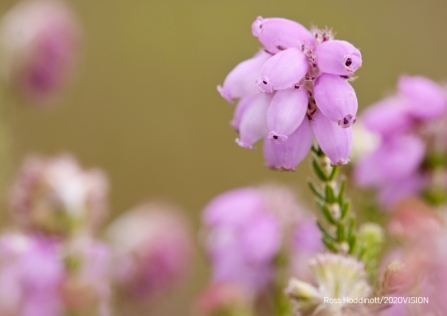These magical and globally-scarce places are dominated by a certain group of plants, the heathers. Heathers belong to the family Ericacea which includes a range of plants including Junipers. These plants are classified as woody shrubs and the leaves are usually evergreen, which means they do not lose their leaves. They flower from July to September in shades of pink and purple, making them very colourful and easy to distinguish in the landscape.
Why is heather so important? Well, it provides a safe nesting place for three very special heathland bird species - the Dartford Warbler, the Woodlark and the enigmatic European Nightjar. You can also find a range of British reptiles including Adders and Sand Lizards hiding out around the heather, and not to mention the many species of invertebrates including a huge range of beetles and spiders that can also be found in the heathland.
In the UK, we have three main species of heather: Common, Bell and Cross Leaved. We shall meet them all below.




